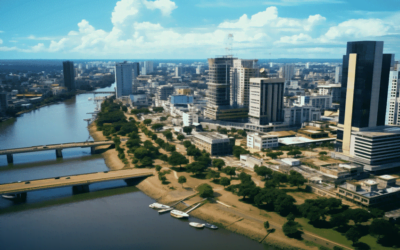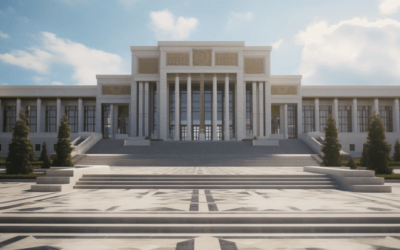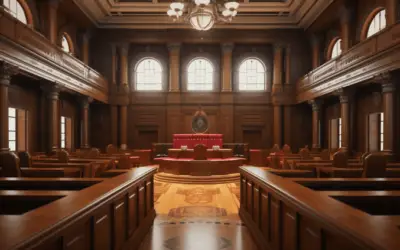Hey there, fellow drone enthusiasts and curious minds, I know the feeling when you’ve got your trusty drone ready to take flight in Panama, but the question of whether it’s all legal and how to navigate those airspace regulations keeps nagging at you.
We’ve all been there—that moment of uncertainty, wondering if your next drone adventure could land you in hot water.
Well, you’re in the right place. I’ve been there too, and I’ve done my fair share of digging into the Panama Drone Laws. Trust me, I’ve got the answers you’re looking for.
I’ve delved into the intricacies of these regulations, scoured the legal documents, and spoken to fellow drone enthusiasts who’ve been through the process. You see, I wanted to ensure I could fly my drone with confidence, and now I’m here to share that knowledge with you.
So, if you’re itching to uncover the secrets of Panama’s drone laws, you’re in the right place. Stick around, and we’ll navigate these regulations together.
I’ve done the legwork to break it all down for you, whether you’re a hobbyist, a commercial operator, a tourist, or even part of a government agency.
Your drone adventures in Panama are about to get a whole lot more straightforward, and it all starts right here. Ready to take that next step? Keep reading, and let’s make your drone flights in Panama smooth and hassle-free
- Navigating Panama’s Drone Laws
- Hobbyist Adventures in Panama’s Skies
- Panama Drone Laws: Commercial Drone Operations
- Welcoming Visitors to Panama’s Drone-Friendly Skies
- Panama Drone Laws: Government Drone Operations
- Navigating the Skies – General Drone Rules in Panama
- Final Thoughts on Panama Drone Laws
- Frequently Asked Questions About Panama Drone Laws
Navigating Panama’s Drone Laws

Role of the Autoridad de Aeronautica Civil de Panama (AAC)
Meet the AAC, the Panama Directorate of Civil Aeronautics. They’re the folks who keep a watchful eye on everything drone-related in this beautiful country. It’s their job to ensure that the skies remain safe for all.
They set the rules, grant permissions, and oversee the ever-expanding drone community in Panama. So, before you even think about launching your bird-like drone into the Panama skies, remember that the AAC is there, making sure everyone plays by the book.
Categorization of Drones by Weight Class
Now, let’s talk about weight. Drones come in all shapes and sizes, from feather-light mini-drones to heavier, more professional rigs. The thing is, Panama’s drone laws take these variations into account.
Depending on how much your drone weighs, there are specific rules to follow. If you’ve got one of those tiny drones, you can go up to 30 meters high for your aerial adventures.
However, if you’re packing a bit more weight, say between 250 grams and 25 kilograms, you’ve got some more altitude to play with—up to 60 meters.
And if you’re handling a heavy-duty drone that weighs between 25 and 150 kilograms, you can soar up to 120 meters above the ground. These weight-based rules help ensure that everyone has their own slice of the sky while keeping things safe.
Types of Drone Operations
In Panama, they’ve categorized drone operations into four distinct groups: hobbyists, commercial operators, visitors, and the government.
Whether you’re a local hobbyist looking to capture stunning aerial photos, a commercial operator exploring new business horizons, a visitor eager to document your Panama journey, or even part of a government agency with specific objectives, there’s a set of rules tailor-made for your drone experience. It’s all about ensuring that your drone adventures match your intent, no matter who you are or where you’re from.
Also Read: Drone Laws in Palestine 2024
Hobbyist Adventures in Panama’s Skies

Ah, the thrill of being a drone hobbyist in Panama! It’s like having your very own ticket to explore the skies and capture breathtaking moments from a unique perspective. Let’s dive into the specifics of hobbyist drone laws, ensuring your flights are not just thrilling but entirely legal.
Allowances for Hobbyist Drone Flights
Hobbyists, here’s the good news – you’re absolutely allowed to take your drone out for a spin in Panama.
Whether it’s to capture mesmerizing landscapes, indulge in some aerial photography, or simply enjoy the experience of flying, the Panamanian skies are yours to explore. But remember, even in the world of hobbyist flights, there are a few rules you need to follow for safety and legality.
Requirement of a Hobbyist Panama Drone Pilot License
Before you rev up those rotors, here’s an essential detail: you’ll need a hobbyist Panama drone pilot license.
Don’t worry; it’s not an arduous process. It’s more about ensuring that you understand the basics of flying your drone safely, respecting privacy, and adhering to local regulations. So, if you’re thinking of making the skies your playground, investing a bit of time in earning your license is definitely worth it.
Mandatory Drone Registration for Hobbyists
Another crucial requirement for hobbyists is the need to register their drones. It’s like giving your drone a unique ID.
This registration process helps authorities keep track of drones, and it’s an essential step in ensuring the skies remain safe for everyone. Remember, Panama’s drone laws are here to protect both you and others sharing the airspace.
Optional Drone Remote ID for Hobbyists
While it’s not mandatory for hobbyists, having a drone remote ID can be a smart choice. It’s like a digital name tag for your drone. This feature helps authorities identify your drone when it’s up in the air. Even if it’s optional, it adds an extra layer of safety and accountability to your flights.
Recommendations for Drone Insurance for Hobbyist Operations
Now, here’s something to ponder. Though not mandatory, it’s highly recommended to consider drone insurance for your hobbyist operations. Drones can be valuable investments, and accidents can happen.
Having insurance can provide peace of mind, ensuring that your drone and any potential liabilities are covered in case of mishaps. It’s like giving your hobby a safety net, making your flights even more enjoyable.
Also Read: Drone Laws in Palau 2024
Panama Drone Laws: Commercial Drone Operations

Now, if you’re a commercial drone operator eyeing the Panamanian skies for business opportunities, you’re in for an adventure of a different kind. Let’s explore the commercial drone laws that ensure your operations are not just profitable but entirely within the legal framework.
Permissions for Commercial Drone Flights in Panama
First things first, Panama opens its airspace for commercial drone flights. Whether you’re into aerial photography, mapping, or delivering packages, there’s a place for your drone business in Panama’s friendly skies. The key is understanding and following the regulations that come with these opportunities.
Necessity of a Commercial Panama Drone Pilot License
When it comes to commercial drone operations, having a commercial Panama drone pilot license is essential.
It’s more than just a piece of paper; it’s a symbol of your expertise and commitment to safe and responsible drone flying. This license ensures that you have the skills and knowledge to handle commercial flights in a professional and secure manner.
Mandatory Drone Registration for Commercial Drone Operators
Like hobbyists, commercial drone operators also need to register their drones. This process helps keep a record of the drones that are actively being used for commercial purposes in Panama. It’s all about transparency and accountability, ensuring that drones are used responsibly and legally in commercial ventures.
Drone Remote ID Regulations (Not Required)
Panama provides a bit of flexibility when it comes to drone remote IDs for commercial operators. While it’s not a mandatory requirement, having one can certainly enhance the safety and transparency of your operations. Think of it as a digital identification card for your drone, allowing authorities to easily identify and track your device.
Mandatory Drone Insurance for Commercial Drone Operations
Just like hobbyists, commercial operators should strongly consider drone insurance. When you’re running a drone business, accidents can have significant financial implications.
Having the right insurance coverage ensures that you’re protected from unexpected mishaps, allowing you to focus on growing your business with peace of mind. It’s a smart move to safeguard your investment and keep your business afloat.
Also Read: Drone Laws in Pakistan 2024
Welcoming Visitors to Panama’s Drone-Friendly Skies

Panama’s skies aren’t just for the locals; they’re open for visitors too. If you’re planning to explore Panama’s stunning landscapes and vibrant culture and you want to document your journey from a bird’s-eye view, you’re in for a treat. Let’s explore the drone regulations designed to ensure your drone experiences in Panama are memorable and entirely within the law.
Requirements for Foreign Visitor Drone Pilot Licenses
As a foreign visitor, you won’t need a specific Panama drone pilot license. Your existing license from your home country should suffice.
However, it’s a good idea to familiarize yourself with Panama’s drone laws to ensure that your flights align with local regulations. Panama’s drone rules are designed to prioritize safety, both for those on the ground and in the air.
Obligatory Drone Registration for Tourists and Visitors
All drones, regardless of whether they belong to locals or tourists, need to be registered in Panama. This registration process helps maintain transparency and ensures that authorities can keep tabs on the drones that are active in the country. It’s a simple step that contributes to the overall safety of Panama’s skies.
Drone Remote ID for Tourists (Not Required)
While it’s not mandatory, having a drone remote ID can be a smart choice for tourists. It’s like having a digital name tag for your drone, allowing authorities to easily identify and track your device. It’s all about enhancing safety and ensuring accountability, even when you’re just a visitor in Panama.
Also Read: Drone Laws in Oman 2024
Panama Drone Laws: Government Drone Operations

When it comes to government drone operations in Panama, the skies serve as a vital platform for various official tasks.
Whether it’s for surveillance, research, or any other governmental objective, these operations come with their own set of rules and regulations to ensure that everything is carried out smoothly and responsibly.
Permissions for Government Drone Flights in Panama
Government agencies in Panama have the green light to utilize drones for official purposes. This permission extends to various sectors, including law enforcement, environmental monitoring, and infrastructure assessment. It’s all about enhancing the efficiency and precision of governmental operations while maintaining the safety and security of the national airspace.
For government drone operations, having a licensed drone pilot is a must. These licensed pilots are trained to operate drones professionally, ensuring that the flights are conducted safely and in compliance with all relevant regulations.
Whether it’s capturing aerial data for mapping or conducting search and rescue missions, the presence of a licensed pilot is a crucial aspect of government drone operations.
Compulsory Drone Registration for Government Drone Operations
Just like other categories of drone operators, government drone operations require the registration of their drones. This step is essential for keeping track of the drones in use and maintaining transparency in the national airspace. It ensures that all government-operated drones are easily identifiable and accountable.
Drone Remote ID for Government Operations (Not Required)
While not a mandatory requirement, government drone operations can opt for drone remote IDs to enhance transparency. This technology allows authorities to identify and track government drones. It’s like having a digital name tag for the drone, which can be particularly useful in situations requiring accountability and security, even though it’s not obligatory.
Also Read: Drone Laws in Norway 2024
Navigating the Skies – General Drone Rules in Panama

Flying drones in Panama is not just about taking to the skies; it’s about doing it responsibly and safely. The general rules that govern drone flights in Panama are designed to ensure that everyone’s experience is enjoyable and free from unnecessary risks.
As the weight increases, so does the permitted altitude, with the heaviest drones, falling in the 25 to 150-kilogram range, being able to soar up to 120 meters. These weight-based rules help maintain order in the skies while accommodating drones of various sizes and capabilities.
Distance Limitations from the Pilot
Panama’s drone laws dictate that drones should not fly beyond 500 meters from their pilot. This rule keeps drones within a reasonably close range to ensure the operator maintains control and visual contact with their drone. It’s all about keeping the skies safe and preventing drones from venturing too far out of sight.
Mandatory Drone Insurance for All Operations
When it comes to drone operations in Panama, insurance is a non-negotiable aspect. All drone flights, whether for hobbyist adventures, commercial endeavors, or government tasks, must be covered by drone insurance.
This requirement ensures that in the event of accidents or incidents, any potential damages or liabilities are adequately addressed, providing financial security and peace of mind for all involved.
No-Fly Zones Near Airports and Structures
Panama’s drone regulations establish strict no-fly zones. Drones are not allowed to operate within an 8-kilometer radius of any airport or airfield. Additionally, within cities, drones must maintain a distance of 150 meters from any building or structure.
These restrictions are in place to safeguard sensitive areas and prevent any potential interference with manned aircraft or endangering people and property. It’s all about safety first in Panama’s drone laws.
Also Read: Drone Laws in Northern Ireland 2024
Final Thoughts on Panama Drone Laws

As we prepare to bring our journey through Panama’s drone laws to a close, let’s take a moment to recap the key points, understand the significance of adhering to these regulations, and emphasize the importance of staying informed in the ever-evolving world of drone operations.
Panama’s drone laws are a comprehensive framework designed to ensure the safe and responsible use of drones across various categories, including hobbyists, commercial operators, tourists, and government agencies.
We’ve explored altitude restrictions, distance limitations, insurance requirements, and the creation of no-fly zones to safeguard sensitive areas. Each of these rules plays a crucial role in maintaining safety and order in the skies above Panama.
The importance of adhering to these regulations cannot be overstated. It’s not just a matter of legal compliance; it’s about ensuring the safety of those on the ground and in the air. By following these rules, drone operators contribute to a harmonious and secure coexistence between drones and manned aircraft.
Whether you’re a hobbyist capturing breathtaking shots or a commercial operator delivering valuable services, adhering to these regulations ensures that your drone adventures are not only legal but also safe and enjoyable.
In the world of drones, change is the only constant. Regulations, technology, and safety measures continually evolve. So, it’s not just about understanding the current rules; it’s also about staying updated with any changes or additions.
This proactive approach ensures that you remain a responsible and informed drone operator, ready to adapt to new circumstances and continue enjoying the beauty of Panama’s skies while following the law. Happy and safe flying!
Frequently Asked Questions About Panama Drone Laws
1. Can I fly a drone for recreational purposes in Panama without a license?
Yes, you can fly a drone for recreational purposes in Panama without a specific Panama drone pilot license. However, you should follow the general drone rules, including altitude restrictions, distance limitations, and the mandatory registration of your drone.
2. Are there any restrictions on the altitude at which I can fly my drone in Panama?
Yes, Panama categorizes drones by weight. Drones weighing up to 250 grams can fly up to 30 meters above the ground, while those weighing between 250 grams and 25 kilograms may fly up to 60 meters. Drones weighing between 25 and 150 kilograms can fly up to 120 meters in the air.
3. Do I need drone insurance for my commercial drone operations in Panama?
Yes, drone insurance is mandatory for all commercial drone operations in Panama. It’s crucial to protect your business and financial interests in case of accidents or incidents during your operations.
4. Is it allowed to fly drones near airports or densely populated areas in Panama?
No, drones are not permitted to fly within 8 kilometers of any airport or airfield. Additionally, within cities, drones may not fly within 150 meters of any building or structure. Safety and privacy are prioritized in these restrictions.
5. As a foreign visitor to Panama, can I fly my drone there?
Yes, foreign visitors to Panama are allowed to fly drones. You can use your existing drone pilot license from your home country, but it’s recommended to familiarize yourself with Panama’s drone laws to ensure your flights align with local regulations. All drones, including those flown by tourists, must be registered.













